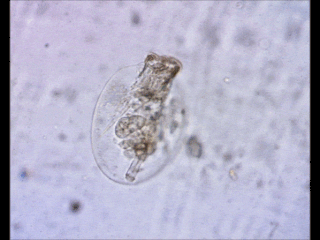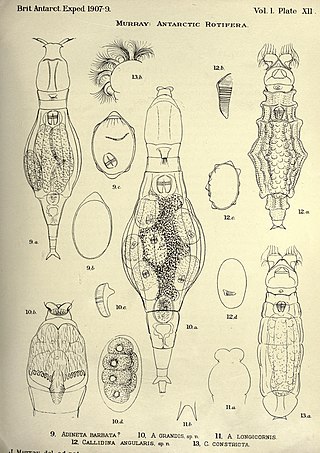
The family Fulgoridae is a large group of hemipteran insects, especially abundant and diverse in the tropics, containing over 125 genera worldwide. They are mostly of moderate to large size, many with a superficial resemblance to Lepidoptera due to their brilliant and varied coloration. Various genera and species are sometimes referred to as lanternflies or lanthorn flies, though they do not emit light.
The Miss Arizona competition is the pageant that selects the representative for the state of Arizona in the Miss America pageant. Arizona has twice won the Miss America title. The first Miss Arizona, Anna Marie Barnett, was crowned in 1938.

The Terebellidae is a marine family of polychaete worms, of which the type taxon is Terebella, described by Carl Linnaeus in his 1767 12th edition of Systema Naturae.

Paul Carpenter Standley was an American botanist known for his work on neotropical plants.

Oligacanthorhynchida is an order containing a single parasitic worm family, Oligacanthorhynchidae, that attach themselves to the intestinal wall of terrestrial vertebrates.

Hypsibius is a genus of tardigrades in the class Eutardigrada.
Diphascon is a genus of water bear or moss piglet, a tardigrade in the class Eutardigrada.

Isohypsibius is a genus of water bear or moss piglet, a tardigrade in the class Eutardigrada. The length of an isohypsibius tardigrade ranges from 0.1 millimeters to 1.5 millimeters. In addition to eating algae and plant cells, tardigrades also consume insect larvae and even other tardigrades. They live in a lot of places, like damp wooded areas with moss, lichens, leaf litter, and dirt. These animals can also be found in natural lakes and ponds.
Gyaritus is a genus of longhorn beetles of the subfamily Lamiinae, containing the following species:
Mispila is a genus of longhorn beetles of the subfamily Lamiinae, with three subgenera - Dryusa, Mispila, and Trichomispila. It contains the following species:

Echiniscus is a genus of tardigrades in the family Echiniscidae. The genus was named and described by Karl August Sigismund Schultze in 1840.
Pseudechiniscus is a genus of tardigrades in the family Echiniscidae. The genus was named and described by Gustav Thulin in 1911.
Bivagina is a genus of monogeneans. As all Monogenea, species in the genus are ectoparasites that affect their host by attaching themselves as larvae on the gills of fish and grow into adult stage. This larval stage is called oncomiracidium, and is characterized as free swimming and ciliated.

Testudinella is a genus of rotifers belonging to the family Testudinellidae.

Lepadella is a genus of rotifers belonging to the family Lepadellidae. The genus has a cosmopolitan distribution

Dissotrocha is a genus of rotifers belonging to the family Philodinidae. The species of this genus are found in Europe, Australia and North America.

Adineta is a genus of rotifers belonging to the family Adinetidae.
Pliolymbus is a fossil genus of grebe known from the Late Pliocene to Early Pleistocene of United States and Mexico. It is known from a single species, P. baryosteus.










